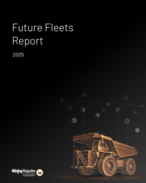This article is 17 years old. Images might not display.
Illawarra Coal was one of several coal companies and industry groups to present a submission to the inquiry's expert panel.
The inquiry was launched late last year by the NSW Department of Planning and Infrastructure to address community concerns about the effect of longwall mining on natural features, including rivers and cliff lines.
Environmental groups have called for total longwall mining bans and insisted the inquiry impose at least a 1km buffer zone surrounding rivers and creeks in the Southern Coalfield.
In its report, Illawarra Coal emphasised that regulatory decisions must be made on a case-by-case basis as the impact of subsidence "will be different in each case as economic, environmental and social factors vary".
"Predetermined rules that seek to minimise impacts, such as generic buffer zones which exclude mining around certain features, are economically inefficient and not appropriate," the company said in its submission.
"An estimation conducted by Illawarra Coal shows that a 1 kilometre buffer around streams in the Southern Coalfields would result in the majority of the Southern Coalfield's coal resources being lost with less than 13 percent of the current coal resources remaining for extraction."
Illawarra Coal also emphasised that it used "sound science" in its subsidence impact prediction and management, highlighting the leaps subsidence prediction had made in the past few years.
"Upsidence movements are frequently observed in the Southern Coalfield within incised topographical features with the potential to result in fracturing, which may lead to the redirection of water into the strata below and water quality changes," the company said.
"Successful rehabilitation techniques are available to mitigate these effects."
Illawarra Coal has three operating mines - West Cliff, Appin and Dendrobium - that currently have and will have natural features in their mining domains.
Illawarra Coal said the decision on whether impacts are acceptable should be made by the Government.
"The most important question for the Government to determine is the acceptability of impacts when all economic, social and environmental factors are considered. Outcomes of project assessments should not be pre-determined," the company said, adding the current implementation of the Subsidence Management Plan approval process had not accounted satisfactorily for economic consideration.
Illawarra Coal sold 6.38 million tonnes of coal in 2005-06, spent $A324 million on regional goods and services, provided jobs for 997 employees and about 400 contractors, and directly contributed $800,000 to the local community through donations and sponsorships.























